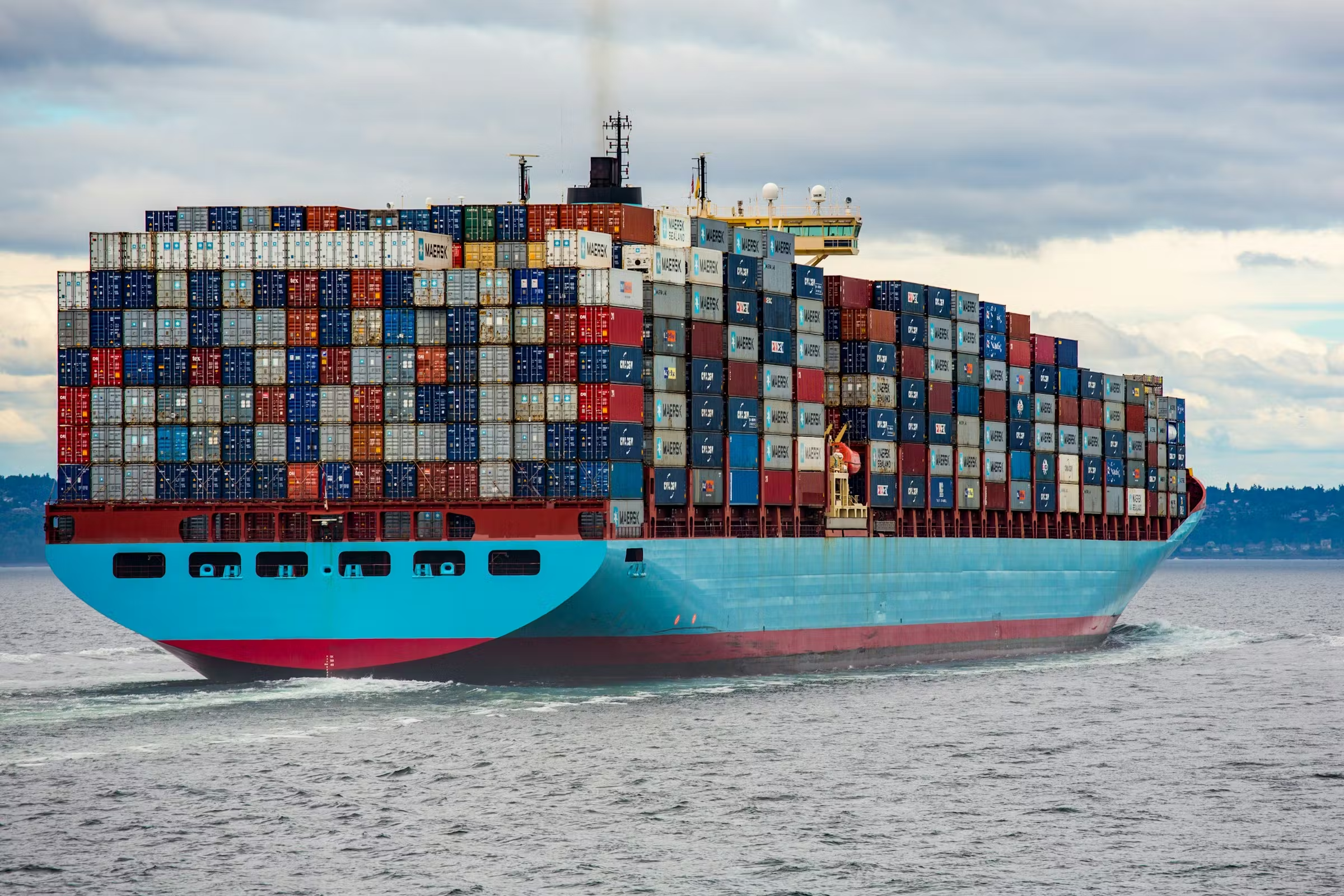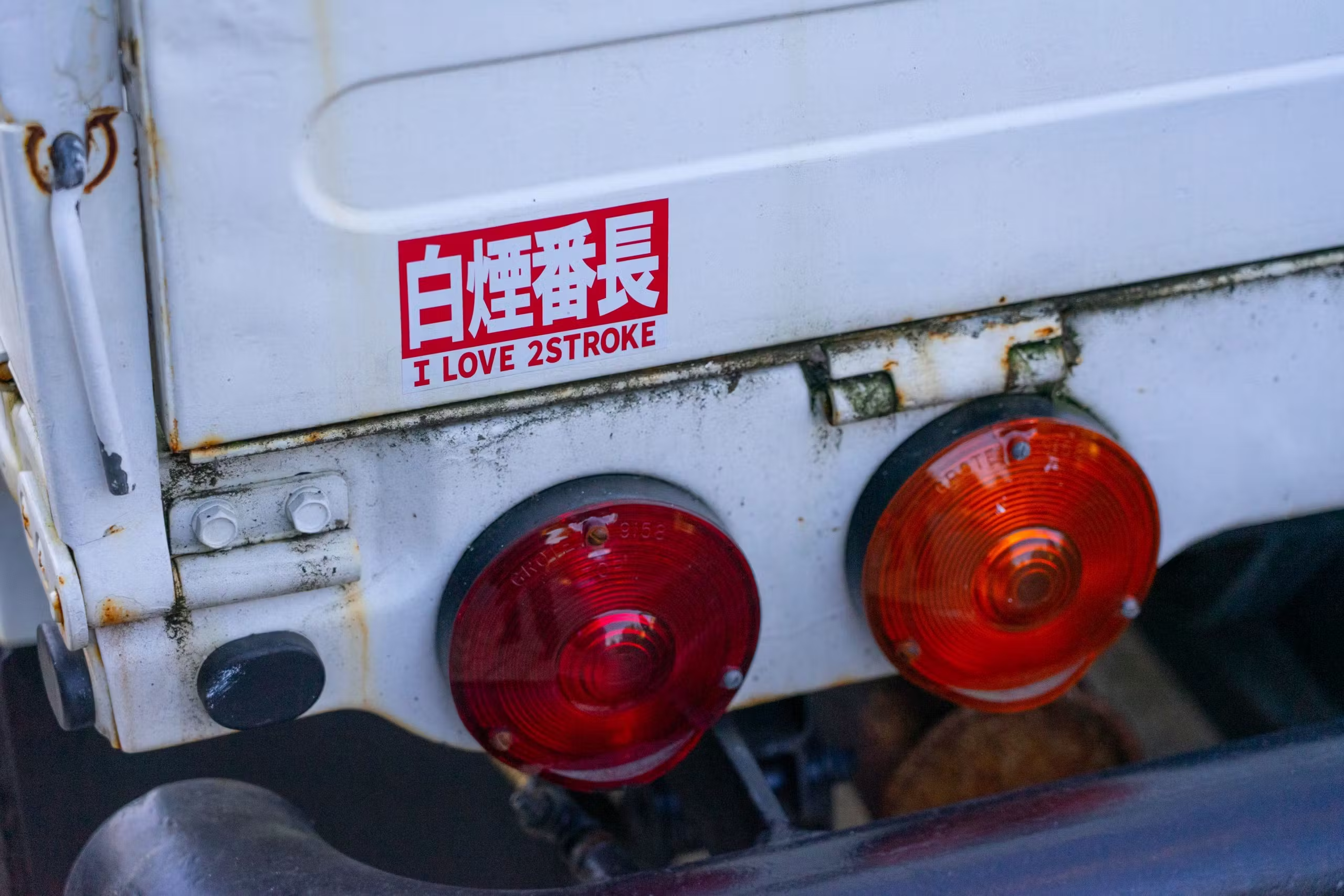Media | Articles
5 Tips for Importing a Collector Car
There’s nothing quite like automotive forbidden fruit. Automakers spend tremendous effort deciding which cars—and which versions of those cars—are earmarked for each market across the globe. Consumers in Japan have long favored plush luxury sedans or quirky, high-personality compacts. Those in Europe like buttoned-down sports cars, often with a practical edge. And the wide-open spaces of Australia are perfect for big off-roaders with huge fuel tanks.
We always want what we can’t have, which is why it can be highly appealing to import a vehicle from another country. For most enthusiasts, shopping for a car thousands of miles away is just a fantasy, but importing a car is becoming an increasingly popular option. Do your homework and shop carefully, however, and you, too, can turn that dream into reality.

The exact process of exporting a car out of any non-U.S. market varies considerably. Not only are you shopping for a car that you may not lay eyes on until it has traveled halfway across the world, but you will also inevitably deal with layers of bureaucracy in at least two countries. And since only a small sliver of Earth’s inhabitants speak native English, you’ll likely have to engage a translator. In some places, like the European Union, you’ll usually get enough paperwork to make titling the vehicle in the U.S. relatively straightforward, but even that is only half the battle. Legally registering the car for road use will depend on a wide range of factors, many of which you should determine before you agree to buy it.
While the many nuances of vehicle importation may require you to solicit the advice of a professional, preparing yourself with some basic best practices can set up your import plans for success.
Be Absolutely Certain You Can Legally Import the Car

The U.S. is very restrictive about what cars can be legally imported for use on our roads. According to the U.S. government, the restrictions are about compliance with our safety and emissions regulations, which are among the world’s most stringent. Historically, the restrictions have also helped protect automakers from the flood of so-called gray-market vehicles that largely came in from Europe in the mid-1980s when currencies like the West German Deutsche Mark suffered in the face of a strong U.S. dollar. Back then, dozens of importers homologated—that is, made minor compliance tweaks—to undercut hefty prices charged by brands like BMW and, especially, Mercedes-Benz.
Whether or not we want to admit that 1988 is now ancient history, it’s when President Ronald Reagan signed the act prohibiting the importation of most sub-25-year-old cars into law. Suffice it to say that you should probably rule out any car that was built less than 25 years ago. That is, of course, unless you never plan to drive it, and it’s on the list of vehicles under the Show-or-Display exemption carved out in 1999. (The backstory of the origins of that rule is fascinating and involves Bill Gates’ Porsche 959 and this Jaguar XJ220.) The U.S. government maintains a list of exempt cars, though it’s worth noting that many of these are now over 25 years old and are thus legal for importation—with some asterisks we’ll discuss shortly.
Marketplace
Buy and sell classics with confidence
A piece of advice: if there’s even a small risk that the car has yet to turn 25 (note that the regulation goes by date of production, not model year), don’t trust the seller or any online VIN decoder about when the car was built. Generally, the car will have a sticker or a plaque affixed to it stating when it was built. Even then, it may make sense to check with the automaker’s heritage department to confirm its actual date of assembly.
Even then, not all cars that have already celebrated their 25th birthday will technically qualify for importation—they must be emissions-compliant as well. Federal law is somewhat vague about modified cars, for instance. The EPA maintains a hotline (734-214-4100) designed to help potential importers determine a vehicle’s eligibility. Generally, the EPA will veto a vehicle that has had major emissions equipment removed or altered—and that’s doubly important if you plan to register the vehicle in a jurisdiction where emissions testing is required. Many states require both visual and instrumented emissions tests for cars that are over 25 years old; an engine swap or an aftermarket exhaust may not pass muster.

It’s also not safe to assume that just because a vehicle passed emissions in the European Union or Japan it will be legal in the U.S. Testing standards vary across the globe.
Once you’re certain that the car’s physical condition is sufficient for legal importation, you’ll also want to make sure that its documentation is accurate. The seller should not balk at providing you with detailed images of the vehicle’s various VIN plates as well as any of its documentation. Look carefully to ensure that everything matches up. A typo made in Germany—even one as innocuous as the letter “O” in place of a zero—will be essentially impossible to fix once the car is sitting at a port in the U.S. For this part of the process, it can be valuable to hire someone certified by the American Translators Association to help you review the documentation. A certified translator can’t provide you with legal advice, however.
Get the Most Thorough Inspection Possible

A pre-purchase inspection by a qualified mechanic is always a good idea. It’s invaluable if the car is thousands of miles away.
Finding a pro in a foreign country can be tricky, though. Many countries have some form of general automobile club roughly equivalent, at least in its barest form, to the American Automobile Association (AAA). Contacting the club that represents the country where the car is located is a good start. They may be able to put you in touch with a nearby mechanic who speaks English. And if that mechanic isn’t well-versed on the specific make or model you’re after, they may be able to find you the right person.

Classic-Analytics, a wholly owned subsidiary of Hagerty, is another resource for cars residing in much of Continental Europe. The company has a network of more than 1,000 appraisers who can be hired to perform pre-purchase inspections for a variety of cars.
You may also want to look for market-specific enthusiast groups, which aren’t too tricky to find for most countries and most manufacturers on Facebook. Don’t assume that BMW fans in Bulgaria or Porsche enthusiasts in Portugal will speak English; use an online translator like Google Translate to introduce yourself.
Another critical component to the inspection is the opportunity for the inspector to further verify the car’s documentation and its VIN tags.
3. Hire Someone to Translate Everything

Remember the American Translators Association we mentioned earlier? You’re going to get to know your translator fairly well by the time your car finally arrives here.
German, French, and Italian, among other languages, are so widely spoken that you may even be able to find a translator who is proficient in the somewhat universal language of cars, too.
4. Find an Importer

A novice probably shouldn’t attempt to undertake the importation of a car by themselves. There are simply too many logistics hurdles. The car needs to travel from the seller to a nearby port, where it will sit and wait for a vessel. Then it will be loaded on that ship and transported across an ocean to a U.S. port. Once on U.S. soil, its paperwork needs to be double-checked and it may be subject to random inspections by the Department of Homeland Security (DHS). Then the car, which is not yet titled and registered for use on U.S. roads, needs to make it from the port to you. And, since ports are secure facilities, whoever collects the vehicle needs to reserve a DHS-cleared escort to access the car.
The last paragraph didn’t need to scare you off.

The easiest and smartest way to get your car is to leave everything to a professional. Many major logistics firms are experienced in importing vehicles, and they can find the most cost- and time-efficient maritime route to get the car from one port to another, and then an overland route to your driveway.
Most will also handle some (but not all) of the importation paperwork for you. Generally, the importer will take care of two of the most critical forms: EPA Form 3520-1 and Department of Transportation (DoT) Form HS-7. An importer can also pay customs duties (typically 2.5% of its declared value) on your behalf.
5. Work With Your State to Ensure You Have the Necessary Paperwork

Importing the car is one thing, but to be able to drive it, you’ll need to title and register it.
Every state’s motor vehicle department has handled an imported vehicle at some point. Some may even have a dedicated department, or at least a single person, who can help you ensure you have the right paperwork ahead of time.
Nearly every state will require at least the following documents, which will need a certified translation if they are not in English.
- EPA Form 3520-1
- DoT Form HS-7
- The car’s foreign title
- A bill of sale from the person listed on the foreign title to you
- A state-specific VIN inspection form
Many areas also require emissions testing for cars of a certain age. If this applies to you, it’s worth reaching out to the government agency that administers testing to see if they have a checklist of emissions-related equipment such as a catalytic converter that needs to be present on the vehicle. The state may require a visual inspection before performing the actual emissions test. And, as the recent rise in popularity of kei trucks has shown, some states have gotten particular about certain types of vehicles and whether they are welcome on public roads, so be sure to brush up on whether your state has made any recent changes to its regulations.
This may all seem like a lot of work, but there’s no need to despair. The feeling of accomplishment you’ll get when you screw a U.S. license plate onto the back of a car that was last driven in Japan is an automotive milestone few will ever experience.















Imported a Vanagon Syncro from Germany 10 years ago. It was an ex-Munich police van. There are people in Europe that pick up vehicles and do all the paperwork on their end for you. All you need is a customs broker on your end to hold your hand through the process. Also imported a Fiat 4×4 out of Italy. I lucked out and found an Italian business that contacts the seller, does inspections, picks up the vehicle and dumps it off at the port. This time around it was a little more tricky since my state never had a Fiat like mine in their database so I had to jump through another hoop and get it appraised so they could tax it. Also on the customs form, the vin number was mixed up. I lucked out again and got a customs inspector who took the time to straighten it out. After that, I’m done with importing.
I have over several years imported and transported and registered many car without any issues. It is not as difficult as it looks. They just have to be 25 years old and have a foreign title where title and vin match up. The US paperwork is fairly straight forward and often the issue is the new price for that year and model in USA if they were not even imported to USA. Besides that I enjoy driving my french and german cars every day. I do speak most european languages and it might make it a bit easier. I also helped several other people import cars and bikes from Europe and i still do.
I dream of owning a Land Cruiser 70 series. But, I live in California and it is unlikely that dream will ever come true. I suppose I could do the Montana registration thing. Not comfortable with that though as I think they are on to it and will eventually crack down, if they haven’t already.
Except for one poster, there’s no mention of general costs (and it was somewhat dated) I’d like to know some estimated costs or fee percentages ; it sounds like a lot of hands in the cookie jar! I realize every country is going to be different – but maybe some common scenarios like from Canada, Australia, and generally European Union to U.S.. Assume older than 25 or even better 35-40 to get past emissions issues. I’ve been interested in a couple from Europe (Britain/Germany) but honestly fearful of the process and unexpected costs.
The emissions compliance section of the article is pretty unclear. Untampered with I can understand, but underlying compliance? Like would a 25 year old EU car qualify. I find it hard to believe especially today that the EPA is rushing to answer that phone call.
Your article touched a nerve. 3 yrs ago I was trying to register my ’89 928 S4. Step 1 is an “inspection” since it came from out of state (Las Vegas to Omaha). The “inspection” is basically a VIN check to see if the car is stolen. It wasn’t, so I take the paperwork to my fav DMV. While they start to process it, I ask if I could get a plate ending in 928. Immediate NO. Then she says the paperwork is wrong, there’s a missing digit in the VIN the inspectors typed in. They can’t call the inspectors, I have to go back down to get it corrected. They’ll hold the paperwork at the DMV that’s already been started.
Go down and come back. Hand over the new docs to a new person who finds my previous paperwork. She says the inspectors pulled the old O for 0 trick. Crap! I was nice but said I’d already been back there a 2nd time. She talks to the 1st person then comes back and says they’ll call the inspection place and have them fax new paperwork. Hmmm… OK. I keep quiet about why they couldn’t do that before. Wait a few min and the fax arrives. Get the new title, registration, and plates – it ends with 928! The 1st lady felt sorry for me and dug thru the pile to find one.
Can’t imagine if that stuff would happen on the front end of a multi-continent sale. All because of human error. The sleepless nights would be staggering.
I drive a JDM Honda. Very few problems- because the car I bought came from an out of state dealer, and had acquired a state title. There is a notion out there that looking at Japanese auction reports, that you can buy a car yourself, and import it much more cheaply. For the most part, you can’t. Once you add all the fees, taxes and value adders in the food chain, it’s close to what you pay through a dealer. Also, there is no substitute for boots on the ground. For Hondas, there are a bunch of people who specialize in buying a specific car for you. They can look at the actual car, and even in some case make sure that your car comes with a fresh battery, a new timing belt, and decent tires. Truth is, in Japan as in anywhere else, a lot of junk ends up at auctions. And parts disappearing after sale, on the docks, or elsewhere on the journey is a real concern.
Up until the tariff war between USA and Canada started, it was easy to buy/sell in either direction across the border. It has now it had become much more expensive on both sides.
Here’s the amendment to the Canadian 9966.00.00 exemption that most of us up here use to import 25+ year old cars and parts for them;
https://www.cbsa-asfc.gc.ca/publications/cn-ad/cn25-10-eng.html?
Fortunately, some of the parts suppliers have already made things easier. VP Autoparts, a Volvo supplier from Sweden with an US operation for North America, has offered Canadian customers the option to order from their Swedish location. Not sure of the shipping fees from Sweden but Canadian suppliers like PartsAvatar have become more active on line following the announcement of the new tariff.
Let’s hope this border skirmish is short lived and we can enjoy our car hobby again, like it was.
*Item #8 in the CBSA document
Yes he does. Talk about throwing a wrench in the wheel.
Sorry Warlock; The 1968 Porsche my dad received via purchase and Army shipping was before that program and came in Euro-spec. No side marker reflectors, better headlights and heaters.
Why do comments get removed after they are shown?
I imported a Porsche 911 from Japan several years ago with grand dreams of driving it home from the “local” port. I learned the hard way that most of the fluids are drained prior to shipping (i.e. gas and oil). The battery will also likely be dead upon arrival. I had to have an import inspection performed and not all shops are qualified for foreign import inspections. Other than that, my dreams came true!